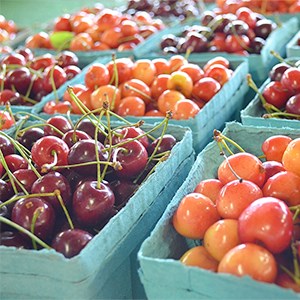Contact
-
Newsletter Food for thought
-
LinkedIn SLU Future Food
-
Podcast Feeding your mind
-
YouTube SLU Future Food

There is a lot of research on how sustainable food systems that produce sustainable food should look. Below is a selection of different reports, future scenarios, articles, assignments etc. that all concern how we should consume and produce food in the future to be sustainable (economically, socially and ecologically).
We are grateful to receive tips on documents that we missed or reports that will be published. Please email futurefood@slu.se with your tip.
Published 2018. The EAT-Lancet Commission on Food, Planet, Health brings together more than 30 world-leading scientists from across the globe to reach a scientific consensus that defines a healthy and sustainable diet. The Commission is delivering the first full scientific review of what constitutes a healthy diet from a sustainable food system, and which actions can support and speed up food system transformation.
This report aims to make the EAT-Lancet targets more meaningful for policy makers, businesses and individuals in the Nordics, and presents a baseline of Nordic food system performance using more local data. Download the report here.
A discussion paper on role of seafood in the EAT-Lancet report. Read more here.
Published 2018. By 2050, nearly 10 billion people will live on the planet. Can we produce enough food sustainably? The synthesis report of the World Resources Report: Creating a Sustainable Food Future shows that it is possible – but there is no silver bullet. Read more here.
Published 2017. This report describes two food system scenarios for Denmark, Finland, Norway and Sweden, where the majority of food is produced within the region using organic farming practices and where livestock is mainly fed on grass and by-products not suitable for human consumption. The results show that we could feed the projected Nordic population in 2030 on organic food, mostly grown within the region, while reducing the climate and nitrogen footprints of our food system. Read more here.
The PRINCE research project is a collaboration project with several universities and research institutes. It is financed by the The Swedish Agency for Marine and Water Management. The PRINCE project developed ways to quantify the different pressures that Swedish consumption puts on the natural world, both at home and around the world. Read more here.
Published 2017. A report by the high level panel of experts on food security and nutrition. Read more here.
The article aims to create a common framework and a scope for proposals for priorities for R&D within Horizon Europe against a resource-efficient, sustainable, competitive and secure livestock production sector in Europe. Read the article here.
Consumers can contribute to a more sustainable meat consumption by making wise food choices that take into account nature, climate and animal welfare. The meat guide makes it easier to choose the right one - download it as a mobile app or read more on WWF's web (in Swedish).
Nature 2018. Here we show that between 2010 and 2050, as a result of expected changes in population and income levels, the environmental effects of the food system could increase by 50–90% in the absence of technological changes and dedicated mitigation measures, reaching levels that are beyond the planetary boundaries that define a safe operating space for humanity. We analyse several options for reducing the environmental effects of the food system, including dietary changes towards healthier, more plant-based diets, improvements in technologies and management, and reductions in food loss and waste. We find that no single measure is enough to keep these effects within all planetary boundaries simultaneously. Synergistic combination of measures will be needed to sufficiently mitigate the projected increase in environmental pressures. Read the article here.
Published 2017. This publication consists of seven stories that focus on different perspectives of the future of Swedish agriculture. The stories describe both possibilities and threats and raise many questions. What will agriculture and society be like in 2030? And above all, how do we want things to be? What possibilities do we have of influencing the way things develop? Read the report here.
Published 2017. Here, various strategies are being studied to measure, to increase visibility and manage sustainability in agriculture and the rest of the food chain. Various sustainability aspects at the farm level in an expanded production of plant foods as human food are also being investigated. Read the report The sustainable farm - does it exist? here
Published 2017. This report is a result of the research study "What is a sustainable agriculture?". With a focus on the Nordic region, the project aims to study various strategies for measuring, paying attention to and managing sustainability in agriculture. Read the report here.
Published 2015. Have you considered the environmental impact of our eating habits? How should you choose in order for the food production to meet as many environmental goals as possible? And what is most important - to eat meat - to drink a lot of milk - great biodiversity - that the food is healthy - that the food is enough for many - that the animals are good - that the landscape is beautiful - that many get jobs in the countryside? Here results from the project Sustainable Swedish protein consumption is presented. Read the report here.
Newsletter Food for thought
LinkedIn SLU Future Food
Podcast Feeding your mind
YouTube SLU Future Food